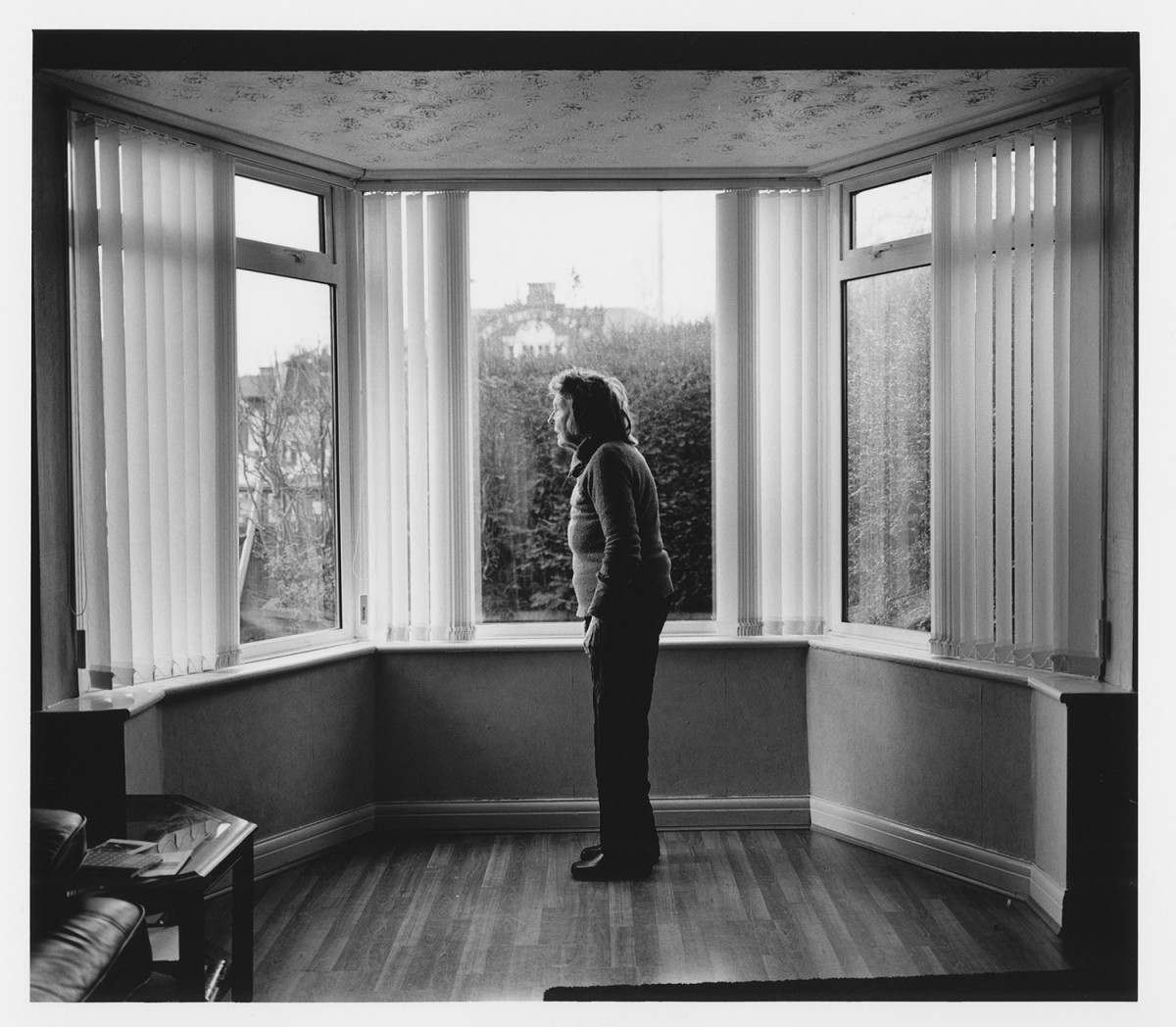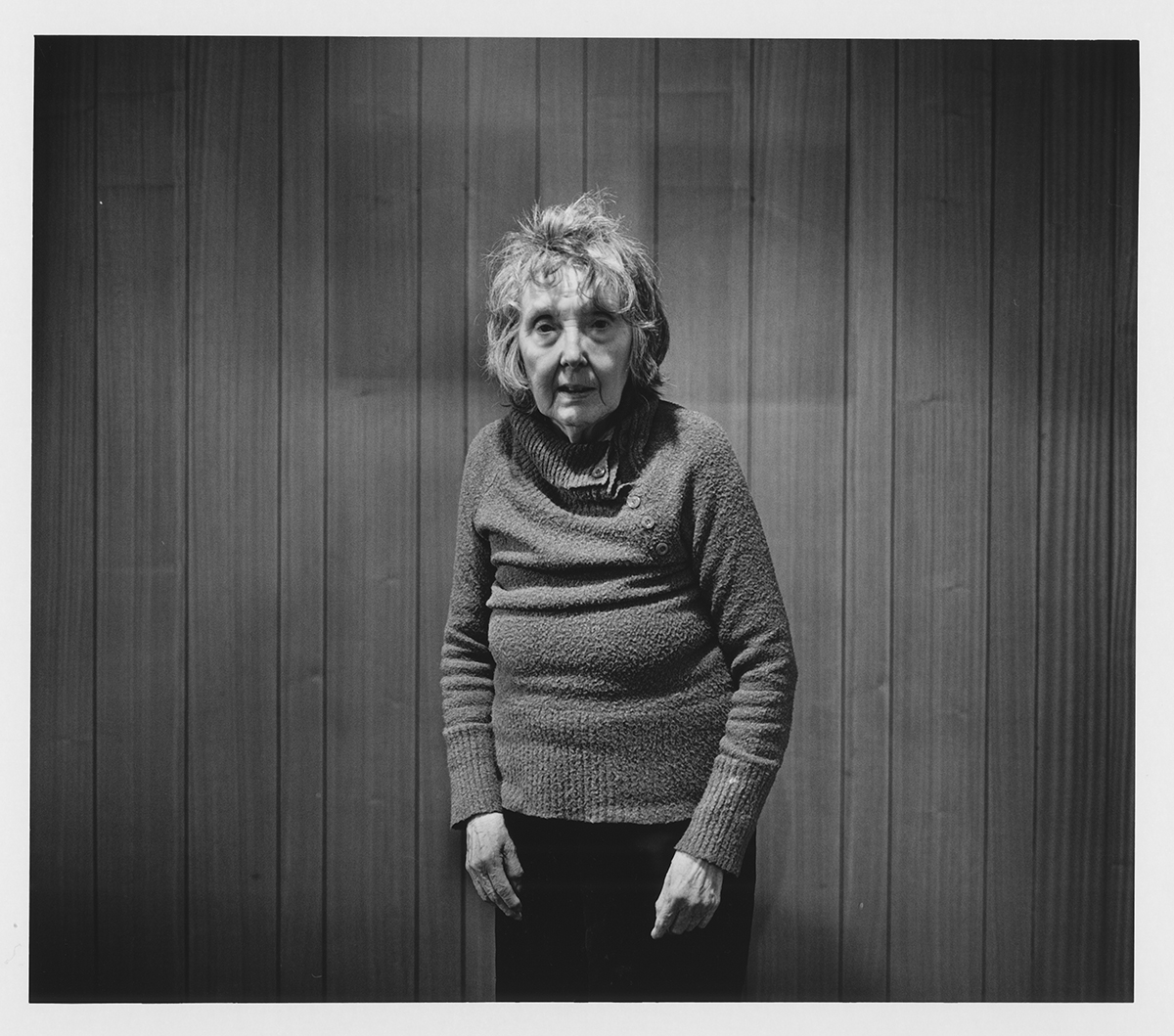Elinor Carucci, photographer and Jerwood/Photoworks Awards 2015 Core Mentor to Matthew Finn, discusses Matthew's complex relationship to his mother through his work.
The Greys
A son’s gaze on his mother.
The way a man sees women begins with the way he sees his mother.
I might go so far as to say that this fundamental relationship between mothers and sons, has not only affected the way women are seen in society, but that the infinitely complex relationship between mothers and sons lies at the heart of many of the events that have shaped human history.

When I was young I always said that I wanted to marry a man who was strongly loved by his mother. The love a mother has for her children is often thought of as a given. But I wanted to find a man whose mother showed him love outwardly and without reservation. “That would make a good man,” I thought.

I found a man who fits this description. We have been together for 22 years and have two children of our own.
Matthew Finn’s work draws us into the always fascinating dynamic between mother and son. That he is the only son of a single mother intensifies this connection. Matthew and his mother Jean are a family of two, and their lives are deeply intertwined. They are dependent on each other, and Matthew is, in many senses, the ‘man’ in Jean’s life. Through the lens, Matthew seems to find perspective on this intensified version of what is the most natural, elemental bond – that of a mother and child.
[ms-protect-content id=”8224, 8225″]

Matthew’s photographs deeply penetrate his and Jean’s relationship. To me, the pictures seem curiously closer to the work of women artists such as Tierney Gearon and Nan Goldin, than to male artists, such as Larry Sultan and Richard Avedon, who have all turned their lens onto their parents. Whereas these men seem to be gazing upon their mothers and fathers with distance and something that resembles objectivity, Matthew is distinctly a character in the story. Like these women (and perhaps Matthew’s fellow British photographer Richard Billingham) the work penetrates not only the psyche of the ‘subject’, his mother, but of the photographer himself.

I see Jean going about her everyday routines; we see her tiredness, her delicateness, and her fragility. We see moments of hope and moments of struggle. I feel her worry, and I can almost hear her thinking about the bills, the house, the grocery shopping and her concern for her son – about his education and struggles in school, and whether he has any friends. Worrying and mothering, inseparable words. When she gets to rest, we see and feel those little breaks in her life. And sometimes she will even put on her makeup, and smile.
Matthew began photographing Jean when he was a teenager and has continued to shoot for almost three decades. The intimacy of their relationship is portrayed with honesty, and the images become universal. In a feminine, maternal way, she lets him in completely. She doesn’t put up her guard and there is no façade when he approaches with his camera.

As a mother, I can relate to the urge to let my children, who were once inside of me, back in. Back to the feeling of completion and warmth. A feeling I have missed ever since I gave birth to them. In Matthew’s images he is back inside her in a way. Inside her feelings, her love and hate. Inside her complexities, her good and bad. Her blacks and whites, and greys.
This essay is published alongside other commissioned essays from Ewa Tater and Aaron Schuman in the Jerwood/Photoworks Awards 2015 exhibition publication
Find out more and order your copy here
For other related Jerwood/Photoworks Awards content, click here.
For other articles in our Ideas Series, click here.
[/ms-protect-content]






